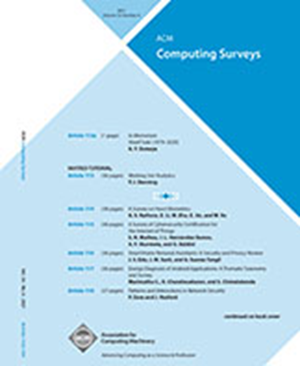基于学习的人类再照明:一项调查
IF 28
1区 计算机科学
Q1 COMPUTER SCIENCE, THEORY & METHODS
引用次数: 0
摘要
人体重照明是指在数字图像、3D场景、视频中对人体主体的照明效果进行调整,模拟各种照明场景,最终达到逼真的视觉效果的过程。本文综述了基于学习的人类重照明技术。在此过程中,它探索了主流方法,同时系统地记录了相关硬件和算法的发展。此外,它还详细分析了基于学习的人类重照明方法如何在基于图像、基于3d和基于视频的环境中发展。此外,本文还对这些方法各自的优点和局限性进行了深入评估,并从性能、健壮性和功能等关键维度对它们进行了比较。最后,讨论了基于学习的人类照明的当前挑战和未来研究趋势。本文综述的目的是提供简明的参考指南,为人体照明的研究和实际应用提供实际支持。本文章由计算机程序翻译,如有差异,请以英文原文为准。
Learning-based Human Relighting: A Survey
Human relighting refers to the process of adjusting the lighting effects on human subjects in digital images, 3D scenes, and videos to simulate various lighting scenarios, ultimately achieving realistic visual outcomes. This review provides a comprehensive examination of learning-based human relighting techniques. In doing so, it explores mainstream approaches while systematically documenting the development of related hardware and algorithms. Furthermore, it offers a detailed analysis of how learning-based human relighting methods have evolved across image-based, 3D-based, and video-based contexts. In addition, the review presents an in-depth evaluation of the respective advantages and limitations of these approaches, comparing them across key dimensions such as performance, robustness, and functional capabilities. Finally, it discusses current challenges and future research trends in learning-based human relighting. The goal of this review is to serve as a concise reference guide, offering practical support for both human relighting research and its real-world applications.
求助全文
通过发布文献求助,成功后即可免费获取论文全文。
去求助
来源期刊

ACM Computing Surveys
工程技术-计算机:理论方法
CiteScore
33.20
自引率
0.60%
发文量
372
审稿时长
12 months
期刊介绍:
ACM Computing Surveys is an academic journal that focuses on publishing surveys and tutorials on various areas of computing research and practice. The journal aims to provide comprehensive and easily understandable articles that guide readers through the literature and help them understand topics outside their specialties. In terms of impact, CSUR has a high reputation with a 2022 Impact Factor of 16.6. It is ranked 3rd out of 111 journals in the field of Computer Science Theory & Methods.
ACM Computing Surveys is indexed and abstracted in various services, including AI2 Semantic Scholar, Baidu, Clarivate/ISI: JCR, CNKI, DeepDyve, DTU, EBSCO: EDS/HOST, and IET Inspec, among others.
 求助内容:
求助内容: 应助结果提醒方式:
应助结果提醒方式:


